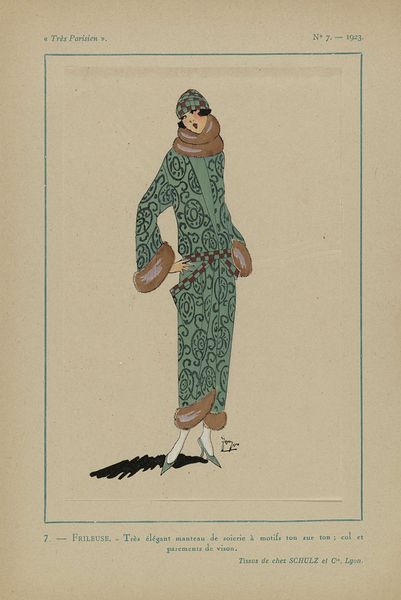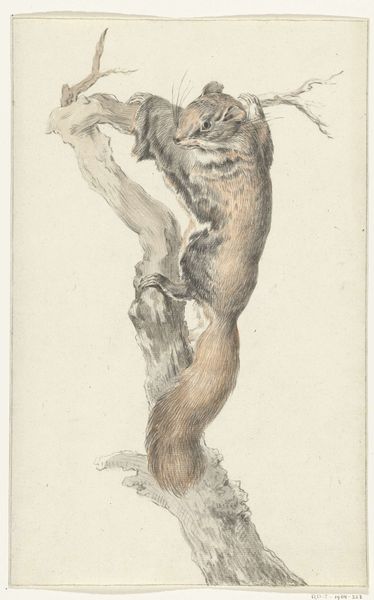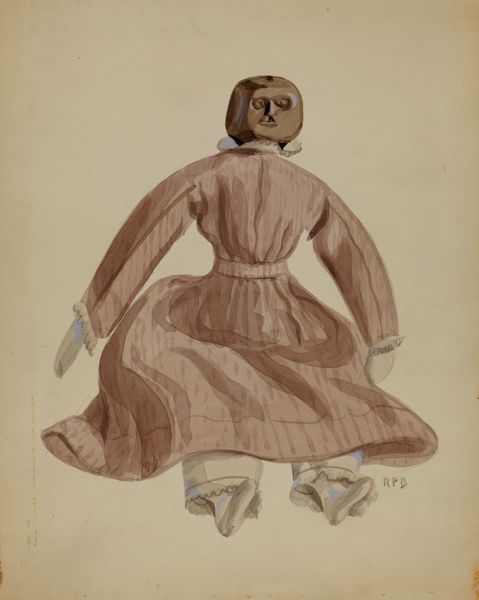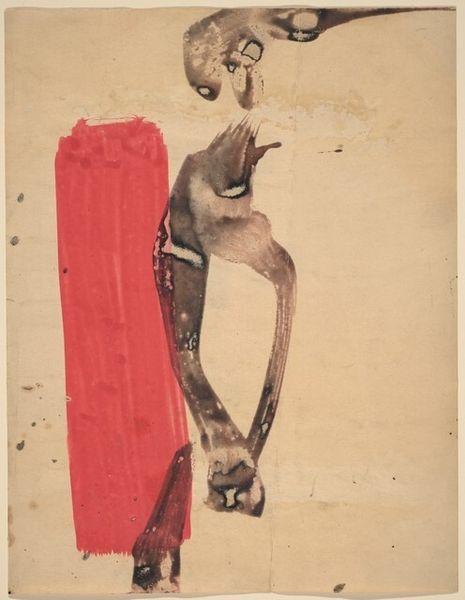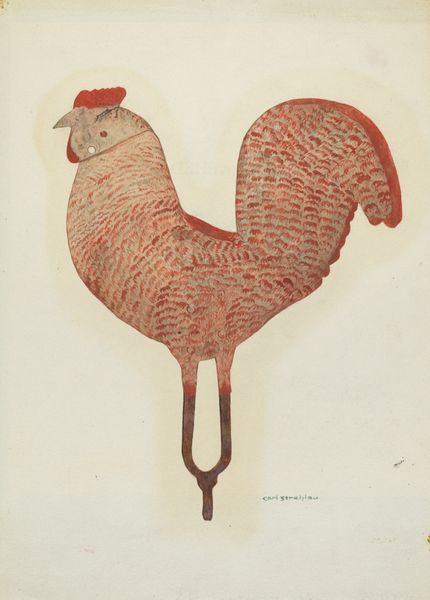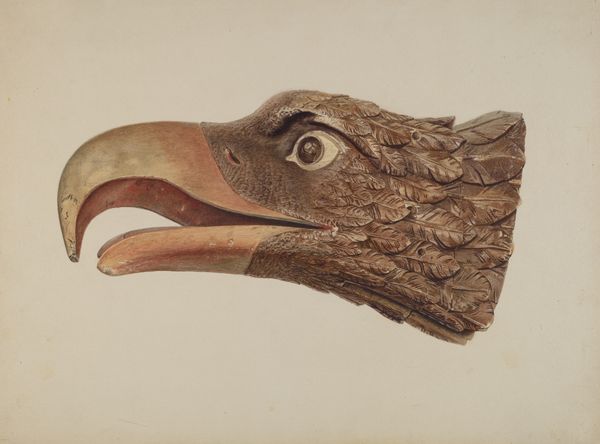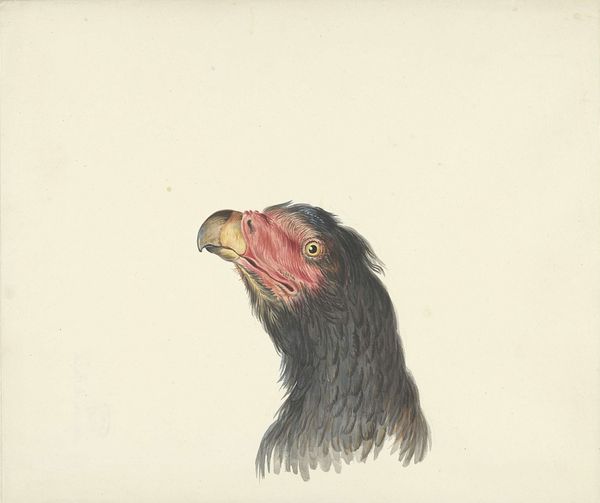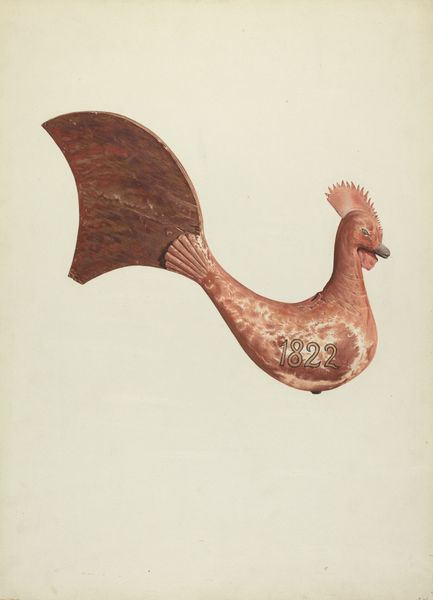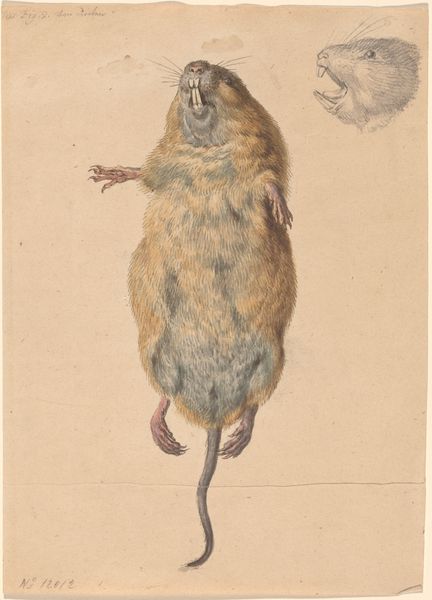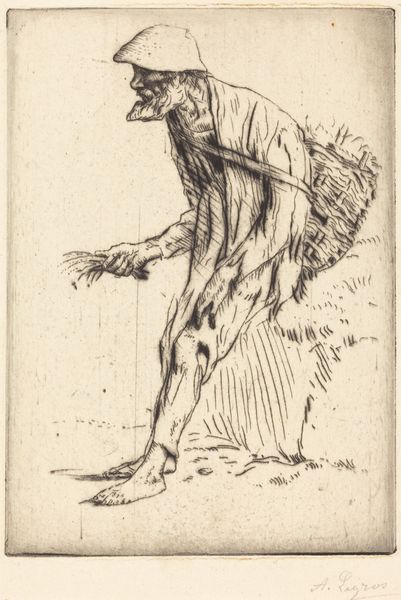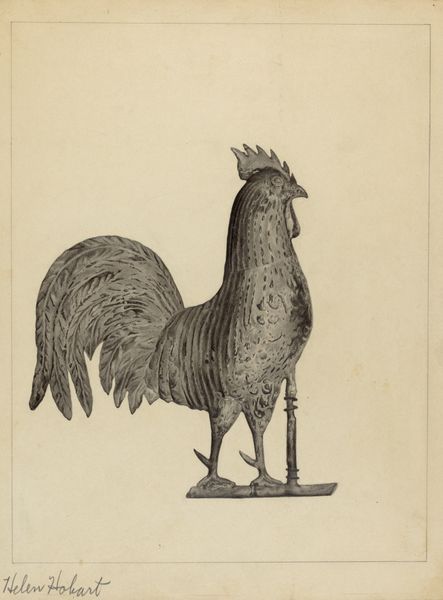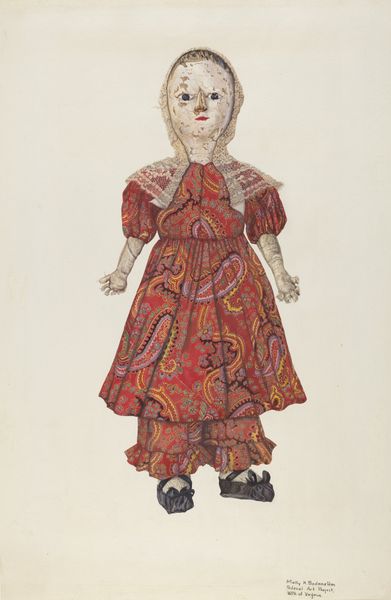
drawing, pencil, charcoal
#
portrait
#
drawing
#
charcoal drawing
#
pencil
#
charcoal
#
watercolor
#
realism
Dimensions: overall: 53 x 38.4 cm (20 7/8 x 15 1/8 in.) Original IAD Object: 29" high
Copyright: National Gallery of Art: CC0 1.0
Editor: Here we have Clayton Clements' "Carousel Rooster" from around 1939, a drawing rendered in charcoal, pencil, and watercolor. The rooster appears static, even a bit severe. What catches your eye in this piece? Curator: Primarily, I'm drawn to the meticulous rendering of texture. Observe how the artist uses distinct marks to evoke the carved wooden surface. The striations suggesting the grain are almost calligraphic. What semiotic reading might we draw from the interplay of material representation and the inherent form? Editor: Calligraphic… I hadn't considered that. It makes me think of writing a language that only the eye can understand. Is the coloring significant? Curator: The limited palette, predominantly earth tones, certainly reinforces the sense of a worn, weathered object. Note also how the eye, rendered in a stark red, acts as the focal point, disrupting the otherwise muted scheme. It introduces a vital element of discord. Do you see a reason the artist included that specifically? Editor: I guess it breaks up the monotone, gives it some... life? Although it's still a drawing of a static object. Does that tension change its effect? Curator: Indeed. It compels us to question the very nature of representation. Is this merely a depiction of a carved object, or is Clements attempting to capture something more profound about the relationship between form, material, and the viewer's gaze? I see how the artist draws our eye across the subject, leading us to pause on the texture. How does the subject feel? Editor: It feels rough but controlled. I see a formal study, an almost philosophical commentary on capturing an object. Thanks. Curator: Precisely. These formal properties elicit deeper questions about the artistic intent and aesthetic impact, it’s always interesting to delve into these artistic conversations.
Comments
No comments
Be the first to comment and join the conversation on the ultimate creative platform.

